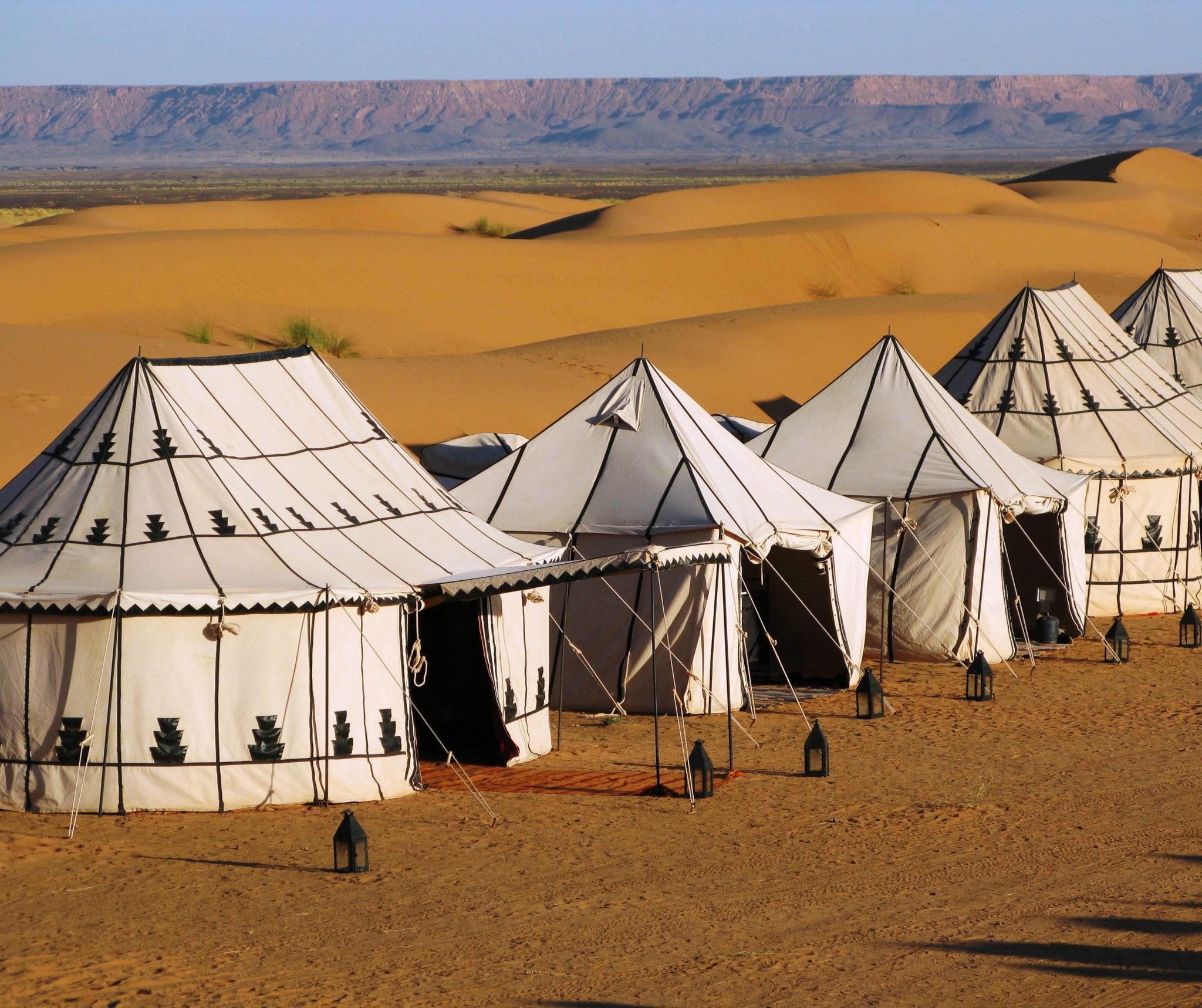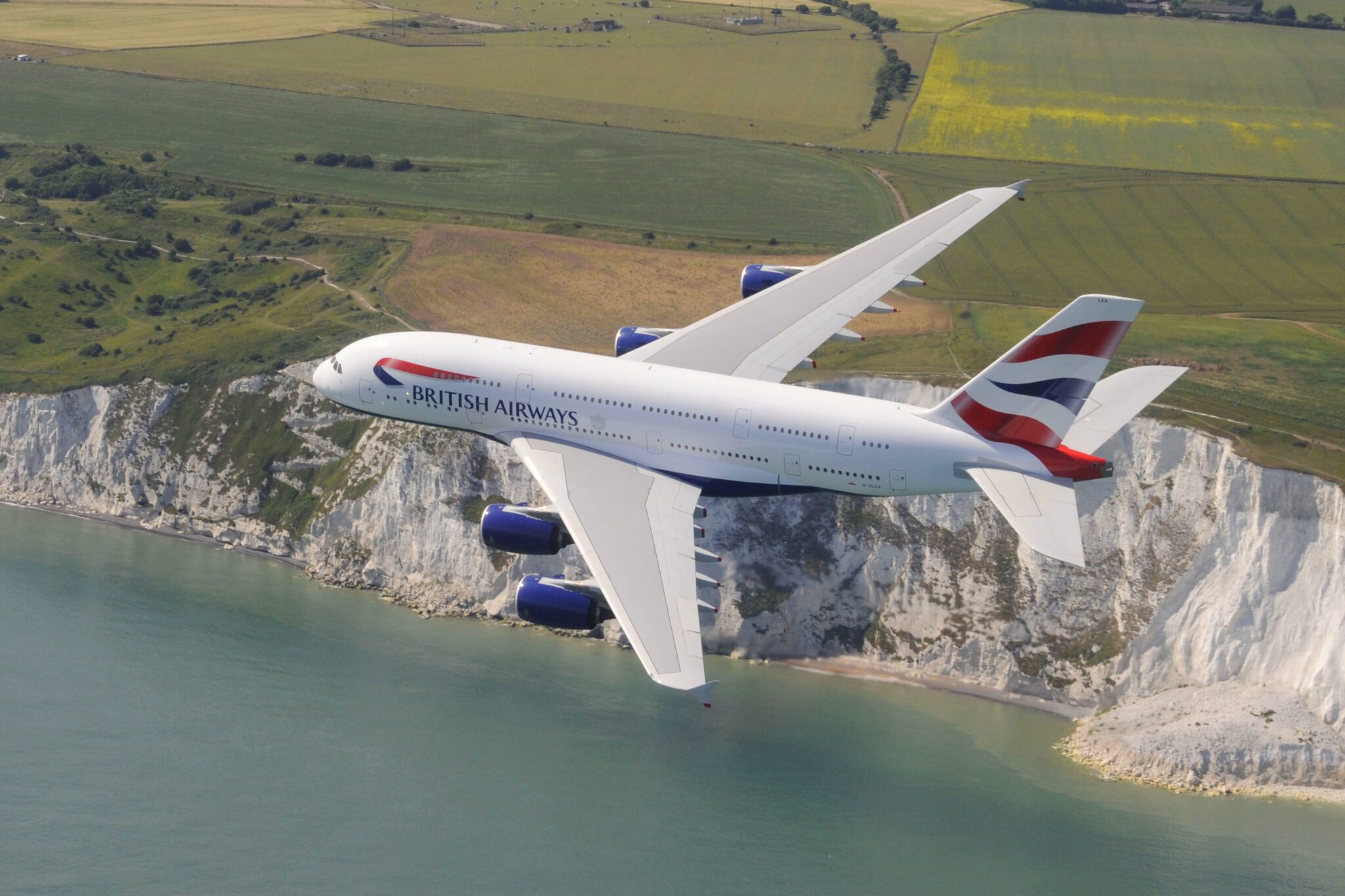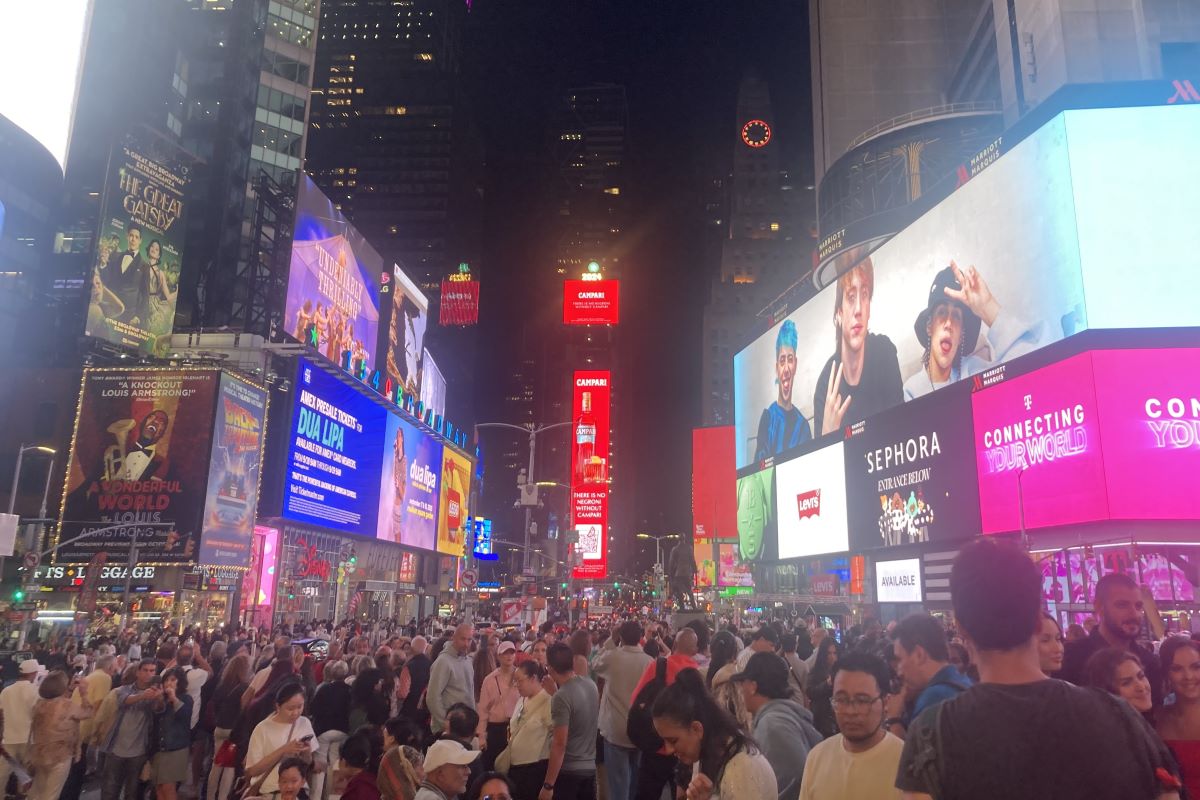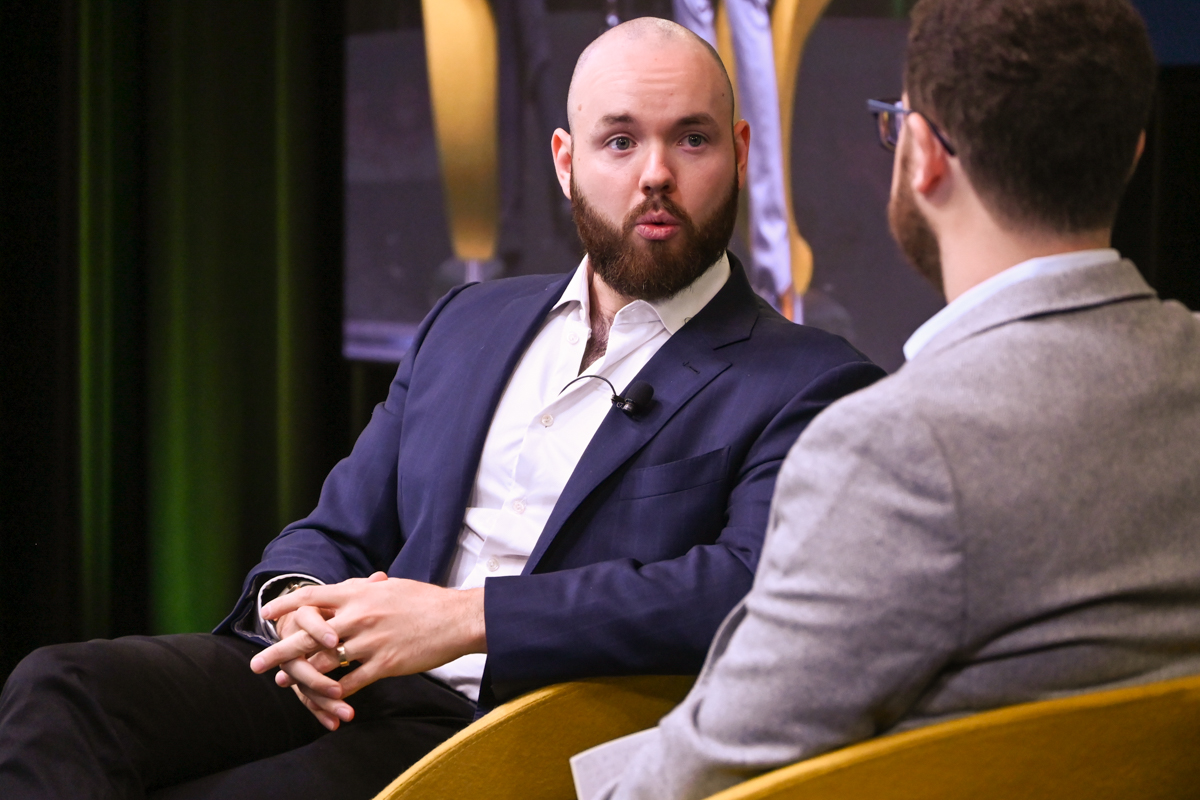A Brief History of Personality-Driven Luxury Travel Companies

Skift Take
Between 1962 and 1979, four of today’s largest and most successful luxury travel companies emerged.
Built around the personalities of a single explorer enchanted by the world and enabled by commercial aviation, these companies have stood the test of time despite broad changes in industry operation and customer expectation.
Skift spoke with Geoffrey Kent, George Butterfield, Sven-Olof Lindblad, and Andrew Harper throughout the summer to tell the story of how these businesses emerged, how they adapted over 55 years, why they stayed independent (or didn’t), and what challenges they face for the future.
The Right Conditions
None of today’s luxury travel pioneers set out to build the world’s most successful full-service travel companies. They were lawyers, photographers, polo players, and editors before diving deep into the travel industry and shifting how and where people go. Quietly, however, the conditions were being set for their success.
Commercial aviation took off in the 1950s and travelers from poor college students to industry titans were eager to see the world in a way that was simply not possible before. Airlines were actually profitable and actively promoting tours and trips in addition to selling tickets.
These were an entrepreneurial group who began several projects. These companies, however, were very much born out of their own pleasure in exploring the world and wanting to share that or find a way to continue doing it for the rest of their lives.
“It was almost by accident,” they say.
The focus was not so much on “luxury” as we define it today, but on providing the highest quality experience in that time — whether that meant the best safari camps, the most informed guides, or access to untouched areas. These companies were in many cases the first to enter destinations from China to the Galapagos Islands and had a front row seat to unsoiled territory — a privilege that is nearly impossible today in the age of overtourism.
Before bemoaning the current possibilities for exploration, let’s look back at 1962 when an African safari was designed solely for hunters and much of the continent had never been touched by a foreign visitor.
Abercrombie & Kent’s Ascent to Luxury Leader
Abercrombie & Kent was launched in 1962 by a young Geoffrey Kent who saw an opportunity to design a first-class safari experience in Kenya where tastes were slowly shifting away from hunting expeditions as global appetite for safe adventures grew.
Kent’s years in the British Army gave him the planning skills to coordinate the first safari, which required old British Army trucks, stealing the staff of his parent’s country club, and wrangling old friends together to lead the trip. Kent does a fine job of chronicling the early days of his empire in his book Safari, which is also serves as an interesting perspective into colonial Africa.
Perhaps most interesting in A&K’s early days is how the sales structure grew. Kent went to the Abercrombie & Fitch hunting and sporting goods store in New York and proposed that they sell his safari tours to a American customer base.
At first, they thought a safari would be too uncomfortable for the leisure traveler, but they came on a trip and were convinced, as Kent tells it.
“They thought it was the most wonderful idea because they only sold hunting supplies and they saw the change coming.”
The average photographic safari in that day was $25 per person per day while the average hunting safari was $500 per person per day. Kent sold his tours for $200 per person per day.
From there the company grew to include gorilla tours, walking tours, horseback safaris, canoe tours, and night drives across Kenya, Tanzania, and Uganda.
“I had the base of this incredible camp that became my HQ,” Kent said. “Once I could do that, I could go anywhere… and there was nobody else there.”
In addition to hosting his own tours, Kent was also white-labeling the camps for the original Lindblad and one other U.S. company. That is until he properly launched in the U.S. in 1972.
He set up a U.S. office and was visiting individual travel agents before finally convincing British Airways agents to sell his tours. That was the magic bullet it took for his sales to go from nothing to $10 million to $90 million in the U.S.
Throughout this time, Kent was also gaining a reputation as one of the best polo players in the world, which led him to rub shoulders with the wealthy individuals who were both interested and able to afford his trips. His role, for example, as a Rolex ambassador put him regularly in front of a room of Rolex clients where he could pitch his business.
Abercrombie & Kent grew internationally and was often one of the first operators in new destinations such as China or Bhutan.
Then, last year, the company entered into a deal to be acquired by Chinese tourism developer and investment group Zhonghong Holdings.
“If they hadn’t been so nice and so understanding, which an American and European company wouldn’t be, then I wouldn’t have done it,” Kent said.
The Chinese consumer also poses an interesting opportunity for Kent, who still sees the U.S. as the primary market for experiential travel. He explains that Chinese customers have to see a physical advantage to booking with a company; the company can’t just rely on the soft power that his brand might hold in Western countries.
“If the Chinese can Google, it then you’ll have a hard time selling it. You have to offer something that they can’t get any other way,” he said while pushing Antarctica expeditions.
Two trends that he sees continuing for the future are the growth of multi-generational travel and active travel, from hiking to climbing Kilimanjaro to deep diving trips, which a younger audience is asking for more and more.
Butterfield’s Journey from Students to Bikes
Around the time that Geoffrey Kent was getting started, George Butterfield was traveling from Canada to Europe for his first student tour where the first inklings of his future business Butterfield & Robinson were born. Butterfield was first a customer then an employee and — after graduation — he decided to start his own student tour to get back to Europe.
“The first trip attracted 40 students, which was beyond our wildest dreams, with $60,000 in revenue and $12,000 profit after the trip. From a $1,500 start to revenues and profit year one, we thought, ‘We’ve got to do this again,’” Butterfield explained.
The evolution of the company starts with student trips and does not reach its eventual business of luxury bicycle tours until 1980. And there was quite a journey in between.
The student trips continued to grow rapidly, but Butterfield and his team continually received requests from the students’ parents for an adult version of the tour. The student trips always had an element of bicycling, but Butterfield wanted to test the concept of an all-bike tour paired with great hotels.
That first tour was conceptualized in 1972 and cost $190 with a standard room for the week. Butterfield partnered with Lufthansa Airlines to spread 30,000 brochures throughout North America.
“Not a single person was interested in taking that trip,” Butterfield said.
Throughout the 1970s, Butterfield continued growing his company by adding student tours and representing other businesses including Abercrombie & Kent in Canada. However, he started to notice a shift in the students’ travel habits.
“There was a sea change in attitude. Students started traveling on their own and by the late ’70s, our student trips began to wane. I realized that student trips were not going to be our future,” explained Butterfield.
Around that time a friend suggested that Butterfield try a biking tour with a cultural angle. He laughed off the suggestion, saying that he had already tried it in 1972 and it did not work. To humor his friend, they put a single ad for a bike tour in The Globe and Mail newspaper in 1980.
Within 24 hours, it sold out.
In five years, Butterfield went from hosting one bike tour to 70 tours per year.
The last student tour was run in 1993.
“Something happened and I’ve never understood what it was that changed bike tours from a failure to a success,” said Butterfield. “As far as I know, we were the first people to put together fine hotels and biking.”
The hotels were at first surprised to see adults in bike gear coming into their high-end establishments, but Butterfield says the staff began to prefer his groups to all others. The bikers came in with a smile after a day of fresh air and exercise while other travelers arrived tired or cranky. This marriage of luxury and adventure was still a very new idea in the 1980s.
Butterfield himself, however, is cautious with the word luxury.
“The word luxury was never used by us into the 1990s,” he said. “We thought high-end or high-quality. The word luxury has a funny connotation for me. The world luxury doesn’t suit me. Luxury to me means interesting, high-quality, unusual and really really comfortable.”
When we spoke to Butterfield in July, he had just returned from a biking trip in Japan. He says that he never could have imagined in the early days that one of the best tours his company offered would be in Asia, but he can’t stop himself from gushing about the experience.
“The trips have never really been about biking as much as what happens in between,” he said.
Butterfield is still involved in company operations and has no plans to sell.
“If you don’t do it every year, you forget what the business is really about,” Butterfield said from Bermuda, where he was checking accommodations for a group of guests coming in for the America’s Cup. “It’s not just about sitting in some office and being isolated and making grand plans. It’s where the rubber hits the road.”
Biking today is championed as a green way to travel, and that’s clearly had an impact on Butterfield who, outside of Butterfield & Robinson, has dedicated himself to solving the carbon problem of the world. He says that he spends most of his time in the environment sector and works with city governments and businesses investing in new eco-friendly technologies.
“I said 10 years ago, ‘I have to stop the world from dumping pollution in the atmosphere and I then can die happy.’ I mean that,” he said. “The biking actually fits nicely into that.”
Sven Lindblad’s Voyage From Son to a Legacy All His Own
Sven Lindblad was not always by his father Lars-Eric Lindblad’s side. In fact, the elder Lindblad was often away traveling during Sven’s childhood.
“He was always a heroic figure for me,” said Lindblad, who was working on a book of photography in East Africa when his father approached him about coming to work with him.
“I had not really planned to go into the business, as I was very happy with what I was doing in East Africa, but I decided to join him,” he explained.
Lindblad joined his father’s company during an exciting time when China was first opening up. He worked in the New York office for just over a year before proposing what would become Lindblad Expeditions today.
“At a certain point, I really wanted to focus more on the essence of what I believed Lindblad to be, so I suggested the formation of a division, which was then called special expeditions.”
At the time of launch in 1979, Lindblad wanted to focus on safaris and small nature-based land trips and had too little capital to even dream of ship expeditions. The first boat was chartered in 1981 and the inventory slowly grew to include more chartered and then owned boats. Itineraries were equally distributed between land and sea until 2001 when he decided to focus primarily on ships.
“The ships were a fixed commitment from a business point of view and that shift turned out to be a really healthy idea because we were able to create the kind of focus we needed to grow our business down the line,” Lindblad explained.
“My attraction to ships had to do with my time in Africa. Ships are a way of being flexible and getting away from the trappings of tourism, which has certainly accelerated in the last decade. A lot of beautiful places are now very overcrowded.”
Lindblad created all of the original itineraries based on his own interests more than a calculated approach to appealing to customers. He calls some of his first trips “wacky counterintuitive ideas,” and was pleasantly surprised to see how hungry travelers were for more time in nature with intelligent informed guides.
“I wasn’t familiar with the travel industry, but I was familiar with geography. I felt that if I offered people itineraries that I would really love to do myself and I could create those experiences as I would love to do them, then they might work. I didn’t do market studies. I didn’t have the resources or ability to do that,” he said.
“The only thing I could do was follow my gut.”
>>Related: See Sven-Olof Lindblad speak at the 2017 Skift Global Forum.
The original magic of many Lindblad expeditions was that they took travelers to previously untouched destinations from the Galapagos to Antarctica. There was a true sense of adventure and privilege in being among the first to visit a place.
Although that sense of virgin exploration is gone, Lindblad says that these trips are only getting better and still help people escape from destinations burdened with overtourism.
“People ask me all the time if the age of exploration is over. I think it’s the opposite in many ways,” he said. “There are so many more tools available than there were in the past. We used to make so many mistakes because we didn’t know any better. It’s more nuanced now, and I actually find it pretty exciting.”
Technology, of course, plays a big role in fine-tuning the expeditions, and it’s also changed how travelers experience them. Lindblad’s customers move more quickly from topic to topic and don’t have the same patience. They are also much more interested in photography, an interest that is more than satiated thanks to Lindblad’s partnership with National Geographic.
Lindblad approached National Geographic 13 years ago to form what he calls “a natural partnership.”
“National Geographic’s mission was to explore the world and disseminate that the information. Our job is to take people there.”
Although Lindblad doesn’t credit the partnership with his company’s survival, he does believe that the partnership is extremely valuable, helping it weather the 2007 crisis and continue to build healthy profits. The expeditions regularly host National Geographic photographers, scientists, and engineers.
Lindblad’s mission today is very similar to that of the young man who decided to leave East Africa and join his father decades ago.
“I believe that a certain type of travel helps people understand the world better. The minute someone travels somewhere and has certain experiences, they see the world differently,” he said. “I think it’s important to get out there.”
Andrew Harper’s Undercover Mission Continues
Andrew Harper is a pseudonym for a man, and his successors, who have built a legacy based on their unbiased reviews of luxury hotels and now experiences around the world.
The original Andrew Harper (whose real identity has never been revealed) was a 40-year-old ad man in New York City who grew tired of the grind. He and his wife made the bold decision to leave corporate life behind and embark on a year-long trip.
He decided to create a newsletter chronicling their stops and adventures and send it out to anyone interested. The first Hideaway Report, still Harper’s staple product, was a hand-typed letter sent to 60 people in 1979.
Within five years, there were thousands of subscribers. Motivated by its adoption, Harper bought advertisements in The New York Times, The Economist, and The Wall Street Journal and continued to grow his base. Before long, thousands of subscribers were paying $150 a year for the reports and Andrew Harper had a new profession. His brother came on to run the financials and they together operated the business for the next 25 years.
“He started in 1979, which is when international travel really started to take off. Airlines got into the business of promoting travel and the five-star hotels in Bangkok became as popular as the five-star hotels in Paris,” explained the current Andrew Harper.
“He was lucky. He hit it right on the crest of the wave and took it into the beach. The sources of information that we have today did not exist back then. Travel + Leisure was two years old and Condé Nast Traveler did not even exist.”
After decades on the road, the original Andrew Harper started to grow weary of the constant travel and began looking for a replacement in the late 1990s. Harper was put in contact with an English journalist with a career in publishing that spanned the U.S. and England. He invited the young man to his home with a business-class ticket and they agreed to a contractor role.
During this time, the original Harper also started to consider selling and the company was acquired by a group of investors from Austin, Texas. The original held onto his shares but stepped out of the day-to-day operation and by 2007, the English journalist had fully taken the reins as the new Andrew Harper. This is the man that Skift talked to in July.
Harper travels in two-day to 21-day sprints chronicling his observations in both notes for the print publications and blog posts that are quickly posted online. Harper today is supported by a team of editors that also research, write, and travel. The increased manpower is allowing Andrew Harper to significantly grow its digital footprint and offerings.
Still, the company as a whole is facing a challenge similar to many publishing companies: Its user base continues to age.
The core of Andrew Harper’s business is long-term subscribers with high annual renewal rates. We’re talking about subscribers for 30-plus years — a statistic that today’s magazines would drool over. Many of those readers, however, are 60 years old or older.
Although the legacy of the brand continues to attract the children and even grandchildren of subscribers, Andrew Harper is looking at way to capture new subscribers.
“Like everyone else, we’d love to reach affluent millennials, but are the tastes of millennials so different than baby boomers that we actually need two different products?” asked today’s Andrew Harper in a surprisingly refreshing conversation.
“We can’t change so much for the millennials that we piss off the baby boomers; that’d be cutting our own throats.”
Readers can access tons of free content on the website, but the team is focused on how to convert some Internet readers into $395-per-year subscribers. One option they’ve considered is different membership tiers. The current subscription includes the monthly Hideaway Report, Harper Collection with 12 travel guides, travel benefits at hotels, and travel planning services.
Although the concept is the same as in 1979 — Harper and his editors stay in hotels undetected in order to write completely unbiased reviews — the scope of their digital and print coverage has expanded to include the breadth of lifestyle experiences demanded by luxury customers.
“People are much more interested in spa and fitness centers. People’s taste in cuisine has changed and they are much more interested in a healthier lifestyle,” Harper explained. “Luxury is different than when we started. There’s no questions about that, but people are still looking to Andrew Harper to give them access that other publications cannot.”
Harper is facing challenges similar to any publishing company except it has the benefit of a legacy brand that is both respected and trusted. The company brought on a new CEO in April 2017 and is working hard to transform the legacy brand. We’re excited to see how they package their content and introduce new products for a new kind of customer in the months ahead.





